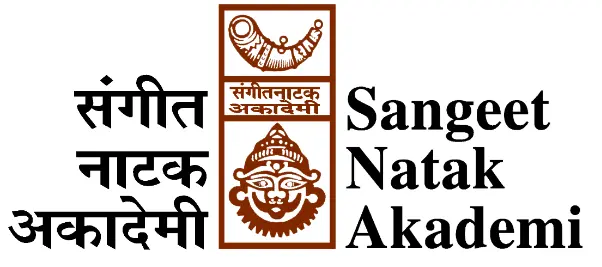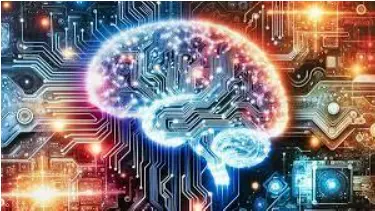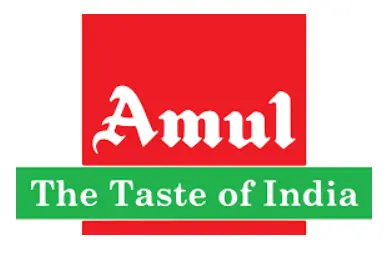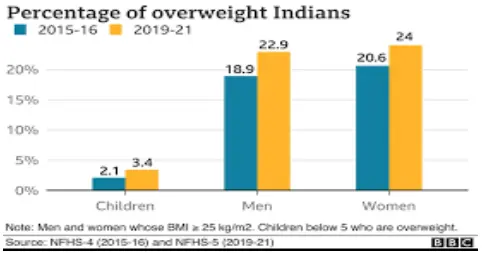Tuesday, 12th March 2024
New Rocket Launchport in Tamilnadu
In News: The Indian Prime Minister recently inaugurated the groundbreaking ceremony for the second rocket launchport of the Indian Space Research Organisation (ISRO) in Kulasekarapattinam, Tamil Nadu.
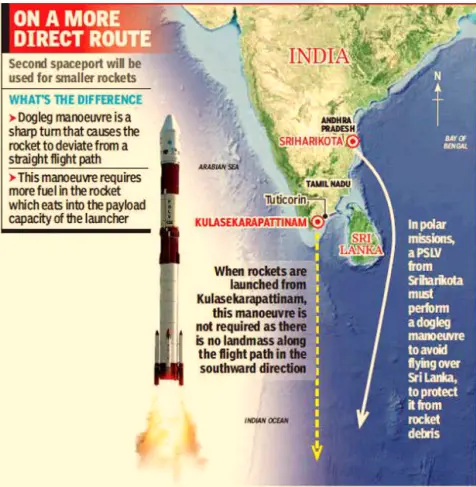
Need for a New Launchport
- Capacity and Overburdening
- Private sector involvement in space is increasing, leading to a surge in commercial launches.
- Existing facilities like SDSC SHAR may be overwhelmed by this demand.
- Establishing a new launchport ensures sufficient capacity without straining current infrastructure.
- Diversification of Launch Services
- SDSC SHAR for larger missions, Kulasekarapattinam for smaller payloads.
- Efficient diversification optimizes resource utilization and tailors infrastructure to specific mission requirements.
- Support for Private Players
- New launchport provides dedicated infrastructure for private players.
- Encourages private investment, fostering innovation and competition in the space sector.
Significance of Kulasekarapattinam Launchport
- Geographical Advantage
- Kulasekarapattinam strategically positioned for Small Satellite Launch Vehicles (SSLV).
- Direct southward trajectory enhances ISRO's payload capacities for lightweight SSLVs.
- Optimized Trajectory
- Straight southward flight from Kulasekarapattinam minimizes fuel consumption.
- Crucial for SSLVs with limited onboard fuel capacity.
- Equatorial Location
- Kulasekarapattinam, like SDSC SHAR, benefits from Earth's rotation during liftoff.
- Velocity boost enhances payload capacity, especially advantageous for geostationary orbit missions.
Small Satellite Launch Vehicle (SSLV)
- Overview
- SSLV is a three-stage launch vehicle with solid propulsion stages and a liquid propulsion-based Velocity Trimming Module (VTM) for the terminal stage.
- Capable of launching 500kg satellites into a 500km planar orbit from SDSC.
- Key Features
- Low cost
- Low turn-around time
- Flexibility in accommodating multiple satellites
- Feasibility for launch demand
- Minimal launch infrastructure requirements
- Significance
- SSLV meets rising demand for small satellites efficiently.
- Ideal for deploying constellations, addressing the growing need for space-based data, communication, surveillance, and commerce.
- Business Opportunity
- Increased demand for small satellite launches provides a lucrative business opportunity for space agencies.
- Frequent, cost-effective rocket launches cater to commercial needs.
- Journey of SSLV
- SSLV-D1 faced failure in August 2022, delivering two satellites.
- SSLV-D2 succeeded in February 2023, placing three satellites into a 450 km circular orbit after a 15-minute journey, both launched from SHAR.
|
UPSC Previous Year Questions Prelims (2018) Q. With reference to India’s satellite launch vehicles, consider the following statements:
Which of the statements given above is/are correct? (a) 1 only Ans: (a) Mains (2019) Q. What is India’s plan to have its own space station and how will it benefit our space programme? |
Source: IE

Penicillin G and PLI Scheme
In News: In 2024, India is poised to resume Penicillin G production after a three-decade hiatus, thanks to the success of the government's Production Linked Incentive (PLI) scheme.

Why did Penicillin Manufacturing Cease in India?
Closure of Manufacturing
- Production of Penicillin G and various active pharmaceutical ingredients (APIs) halted in India due to the influx of competitively priced Chinese alternatives.
- At least five Indian companies manufacturing Penicillin G in the 1990s faced economic viability challenges with the lower prices of Chinese counterparts.
- Closure resulted in the liquidation of sizable manufacturing plants, exacerbated by price caps under the Drug Prices Control Order favoring cheaper imports.
Delay in Revival
- Little urgency to revive Penicillin manufacturing domestically, as global markets offered more cost-effective alternatives.
- Disruption in the supply chain during the pandemic highlighted the need for self-reliance, leading the government to initiate the PLI scheme to bolster domestic manufacturing.
Impact of PLI Schemes
- Significant decrease in API imports post-PLI scheme implementation, including a 50% reduction in paracetamol imports compared to pre-pandemic levels.
- Despite the decline, a considerable portion of APIs, particularly for antibiotics, is still imported, underscoring the necessity for further development in domestic API manufacturing.
- The PLI scheme provides incentives, supporting fermentation-based bulk drugs like antibiotics, enzymes, and hormones, with varying percentages over six years.
Production Linked Incentive Scheme (PLI)
Overview
- Launched in March 2020, the PLI scheme aims to boost domestic manufacturing, import substitution, and employment generation.
- Initially targeted three industries, later extended to 14 sectors, including pharmaceuticals, medical devices, automobiles, etc.
- Domestic and foreign companies receive financial rewards based on a percentage of their revenue over up to five years.
Targeted Sectors
- Encompasses 14 sectors like mobile manufacturing, medical devices, automobiles, pharmaceuticals, specialty steel, electronic products, textiles, solar PV modules, and drones.
- Incentives calculated based on incremental sales, with a focus on sectors like advanced chemistry cell batteries and drones.
Success in Smartphone Manufacturing
- In FY 2017-18, mobile phone imports were USD 3.6 billion, with exports at USD 334 million, resulting in a trade deficit.
- By FY 2022-23, imports reduced to USD 1.6 billion, while exports surged to nearly USD 11 billion, yielding a positive net export of USD 9.8 billion.
- The scheme's success in smartphone manufacturing demonstrates growth potential and competitiveness in targeted industries.
|
UPSC Previous Year Questions Prelims (2023) Q. Consider, the following statements: Statement-I: India accounts for 3.2% of global export of goods. Statement-II: Many local companies and some foreign companies operating in India have taken advantage of India's ‘Production-linked Incentive’ scheme. Which one of the following is correct in respect of the above statements? (a) Both Statement-I and Statement-II are correct and Statement-II is the correct explanation for Statement-I (b) Both Statement-I and Statement-II are correct and Statement-II is not the correct explanation for Statement-I (c) Statement-I is correct but Statement-II is incorrect (d) Statement-I is incorrect but Statement-II is correct Ans: (d) Exp:
|
Source: IE
India's Bail System
In News: The acknowledgment by the Supreme Court of India in the 2022 case of Satender Kumar Antil vs Central Bureau of Investigation underscores the inadequacy of India's bail system and its contribution to the escalating crisis of undertrial incarceration.
Concerns Regarding India's Bail System
High Undertrial Population
- Over 75% of India's prison population comprises undertrials, highlighting a significant issue with the bail system.
- Undertrial prisoners, accused but not convicted, face overcrowded conditions in judicial custody, reflecting systemic problems in the criminal justice system.
Bail Adjudication
- Court discretion plays a crucial role in bail adjudication, guided by Supreme Court guidelines.
- Despite emphasizing the need for bail, courts often lean towards denial or imposing strict conditions without clear reasons.
- Marginalized individuals are disproportionately affected, facing either bail denial or stringent conditions, exacerbating social inequalities.
Challenges in Bail Compliance
- Many undertrials struggle to meet bail conditions due to resource constraints, hindering compliance.
- Lack of financial resources, property, local sureties, residence, and identity proof contribute to difficulties in securing release.
- Existing bail laws inadequately address these challenges, leading to continued imprisonment and delayed release.
Lack of Safeguards
- Safeguards against arbitrary arrest are essential, yet they often exclude individuals from disadvantaged backgrounds, a majority among undertrial prisoners.
- FTP data reveals unjustifiable exclusions, emphasizing the need for inclusive safeguards to reduce undertrial numbers.
Flawed Assumptions
- The current bail system assumes financial capacity and influential connections, contradicting the principle of "bail not jail."
- Reforms are necessary to address systemic issues contributing to the high undertrial population.
Way Forward
- Bail Law Revision
- Ensure fair and equitable bail laws, considering amendments to address systemic issues.
- Explore the possibility of special bail legislation similar to the UK's Bail Act.
- Legal Aid and Support
- Provide legal aid and support for undertrial prisoners to facilitate bail compliance and court appearances.
- Inclusive Safeguards
- Ensure safeguards against arbitrary arrest are inclusive and accessible to individuals from disadvantaged backgrounds.
- Support Programs
- Establish support programs for undertrials, including legal aid, financial assistance, and social support services.
- Collaboration for Holistic Approaches
- Foster collaboration among government agencies, legal institutions, civil society organizations, and community groups for comprehensive bail reform.
- Monitoring and Evaluation
- Establish mechanisms for ongoing monitoring and evaluation of bail reform initiatives to assess effectiveness and identify areas for improvement.
Source: TH
Dispute over the Shanan Hydropower Project
In News: The central government has recently issued an order to uphold the existing state of affairs on the Shanan hydropower project, which has become the center of conflicting claims between Punjab and Himachal Pradesh.

The Shanan Project and Contested Claims
Historical Background
- In 1925 during the British era, Punjab was granted a lease for the 110-MW hydropower project in Jogindernagar, Mandi district, Himachal Pradesh, on the Uhl River.
- The lease agreement was formalized between Raja Joginder Bahadur of Mandi and Col BC Batty, Chief Engineer of Punjab, representing the British government.
Lease Agreement
- Raja Joginder Bahadur granted operational rights to Punjab, serving the energy needs of undivided Punjab and Delhi.
- After partition, the supply to Lahore ceased, and the transmission line terminated at Verka village in Amritsar.
Legal Control under Punjab Reorganisation Act, 1966
- In 1966, during state reorganization, the project transferred to Punjab as Himachal Pradesh became a Union Territory.
- A central notification in 1967 officially allocated the project to Punjab under the Punjab Reorganisation Act, 1966.
Claim of Himachal Pradesh
- Himachal Pradesh contends that the project was owned and operated by them before the 1925 lease.
- The lease granted operational, not ownership, rights to Punjab. Himachal Pradesh asserts its claim once the lease ends.
- Concerns raised about the project's deterioration due to alleged neglect by Punjab.
Claims of Punjab
- Ownership and Possession Claim: Punjab asserts rightful ownership and lawful possession under the 1967 central notification.
- Punjab State Power Corporation Ltd (PSPCL) exercises control over all project assets.
- Legal Action Requested: Punjab, under Article 131, seeks a "permanent Prohibitory Injunction" from the Supreme Court to prevent Himachal Pradesh from interfering.
- Interim Measure by the Centre: The Central government issues an order maintaining the status quo to ensure continuous project operation before the lease conclusion.
|
UPSC Previous Year Questions Prelims (2014) Q. Consider the following rivers:
Which of the above flows/flow through Arunachal Pradesh? (a) 1 only Ans: (b) Mains (2013) Q. Constitutional mechanisms to resolve the inter-state water disputes have failed to address and solve the problems. Is the failure due to structural or process inadequacy or both? Discuss. |
Source: IE
Regional Rural Banks
In News: The 2019 RRB amalgamation struggled with diverse technology and procedural systems, despite sharing a common core banking platform, according to a recent book..
Overview of Regional Rural Banks (RRBs)
- Formation and Mission
- RRBs are collaborative financial institutions formed by the Central Government, State Governments, and Sponsoring Commercial Banks.
- Mission: To provide credit to underserved rural sections, including small farmers, agricultural laborers, and socio-economically weaker segments.
- Origin and Establishment
- Originated from the Narasimham Committee on Rural Credit (1975).
- Established through the RRB Act of 1976, with the first RRB, Prathama Grameen Bank, founded on October 2, 1975.
- Hybrid micro banking institutions combining local orientation with commercial banking culture.
- Functions
- Providing banking facilities to rural and semi-urban areas.
- Conducting government operations (e.g., MGNREGA wage disbursement, pension distribution).
- Offering Para-Banking facilities such as locker services, debit/credit cards, mobile banking, internet banking, and UPI.
- Priority Sector Lending (PSL)
- RBI mandates a PSL target of 75% of total outstanding advances for RRBs, higher than the 40% requirement for Scheduled Commercial Banks.
- Ownership and Area of Operation
- Ownership: Central government (50%), sponsoring bank (35%), state government (15%).
- Area of operation limited to districts as notified by the Government of India.
- Regulation and Supervision
- Regulated by RBI and supervised by the National Bank for Agriculture and Rural Development (NABARD).
- Sources of Funds
- Comprise owned funds, deposits, borrowings from NABARD, Sponsor Banks, SIDBI, and the National Housing Bank.
- Management
- Board of Directors oversees affairs, including a Chairman, three Directors nominated by the Central Government, up to two Directors nominated by the State Government, and up to three Directors nominated by the sponsor bank.
Source: TW
Sponge Iron
In News: Sponge iron manufacturers within the country are apprehensive that an ongoing scarcity of iron ore could potentially push them to the verge of collapse.
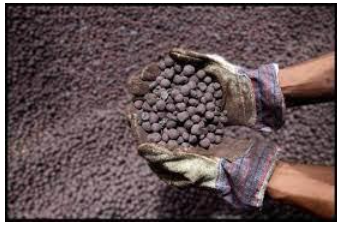
Overview of Sponge Iron
- Production Process
- Direct-reduced iron (DRI), or sponge iron, is derived from the direct reduction of iron ore using a reducing gas produced from natural gas or coal.
- Iron ore in the form of lumps, pellets, or fines undergoes direct reduction by a gas mixture, primarily composed of hydrogen (H2) and carbon monoxide (CO).
- Direct Reduction Process
- The solid iron ore is reduced by the action of hydrogen and carbon monoxide, resulting in the removal of oxygen.
- This process is termed "direct reduction," and it yields sponge iron as the final product.
- Origins of the Term "Sponge Iron"
- The name "sponge iron" stems from the manufacturing process, where the removal of oxygen creates micropores, giving the iron ore a porous, spongy appearance.
- Under microscopic observation, the final product exhibits a honeycomb structure, resembling a sponge.
- Significance in Steel Industry
- Used as an alternative to scrap in induction and electrical furnaces, addressing the challenges of expensive and scarce scrap.
- Enhances furnace efficiency and serves as a consistent iron source with minimal tramp elements.
- Global Production and India's Role
- India holds the title of the world's largest producer of sponge iron, contributing over 20% of the global production.
- The majority of India's sponge iron is produced through the coal-based method, with more than 200 plants involved in the process.
Source: FE
Samudrayaan Mission - Edukemy Current Affairs
In News: India's first manned submersible mission, known as Samudrayaan, has successfully undergone a crucial test conducted by the National Institute of Ocean Technology (NIOT).
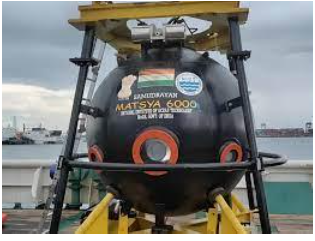
Samudrayaan Mission Overview
- Objective: India’s inaugural manned mission for deep-sea exploration.
- Depth Exploration: Designed to reach depths of 6,000 meters with a manned submersible.
- Scientific Purpose: Equipped with sensors and tools to study deep ocean resources, conduct biodiversity assessments, and gather scientific data
- Ecosystem Preservation: Emphasizes non-disruption of the deep-sea ecosystem, focusing solely on exploration.
- Project Affiliation: Integral part of the broader Deep Ocean Mission aligned with the Central Government’s Blue Economy policy.
MATSYA 6000 - Manned Submersible
- Development: Crafted by the National Institute of Ocean Technology (NIOT), Chennai.
- Endurance: Operational period of 12 hours, with a 96-hour emergency capability.
- Purpose: Facilitates human exploration of deep oceanic mineral resources, enhancing capabilities for man-rated vehicle development.
- Launch Timeline: Expected launch in 2024-25, positioning India among select nations having conducted crewed under-sea expeditions beyond 5,000 meters.
Deep Ocean Mission Key Facts
- Mission Background: Formulated to support the Blue Economy Initiatives of the Indian Government.
- Administrative Oversight: Central Sector Scheme led by the Ministry of Earth Sciences.
- Scope: Multifaceted program aiming for a comprehensive understanding of living and non-living resources in the Indian Ocean's deep sea.
- Technological Development Components: The mission encompasses six major components, focusing on technologies for deep-sea mining, underwater robotics, ocean climate change advisory services, biodiversity exploration, energy and freshwater extraction from the ocean, and advanced marine stations for ocean biology.
- Cost Estimate: Budgeted at 4,077 crores for a phased implementation over five years (2021-26).
Source: HT
Core Inflation
In News: Economists predict that core inflation will likely persist at a low level of around 3% in the short term. This projection is attributed to subdued rural demand, a decline in housing inflation, and reduced pressures from input costs.
Understanding Core Inflation: Key Points
- Definition: Core inflation measures the change in the costs of goods and services, excluding the impact of price variations in seasonal elements like food and energy.
- Exclusions: Food and energy prices are excluded due to their volatility and susceptibility to wild fluctuations.
- Long-Term Trend: Core inflation represents the enduring trend in the price level, providing insights into the overall economic landscape.
- Importance
- Consumer Income Impact: It helps determine the influence of rising prices on consumer income.
- Policy Considerations: Central banks often use core inflation measures to filter out temporary price movements and make informed monetary policy decisions.
- Temporary vs. Permanent Shocks: Core inflation aids in distinguishing between temporary shocks that may reverse and more permanent price changes.
- Central Bank Focus: Central banks often target core inflation as it reflects demand-side pressures in the economy.
- Predictive Value: By eliminating volatile components, core inflation is considered a better predictor of future inflation trends.
- Policy Guide: Central banks use changes in core inflation to adjust key policy rates, contributing to effective long-term policy framing.
Source: ET
Yaounde Declaration
In News: Health ministers from African nations grappling with the highest malaria burden have recently endorsed the Yaounde Declaration, aiming to eradicate malaria-related deaths.
Yaounde Declaration: Addressing Malaria in Africa
- Signatories and Occasion
- Health ministers from 11 African countries signed the Yaounde Declaration.
- The signing took place at the Yaoundé conference, jointly hosted by the World Health Organization (WHO) and the Government of Cameroon.
- Participating Countries
- Burkina Faso, Cameroon, the Democratic Republic of the Congo, Ghana, Mali, Mozambique, Niger, Nigeria, Sudan, Uganda, and Tanzania were the signatory countries.
- These nations collectively bear approximately 70% of the global malaria burden.
- Commitments and Objectives
- Pledged to address the malaria threat sustainably and equitably in the African region, which accounts for 95% of global malaria deaths.
- Committed to providing strong leadership, increased domestic funding, and investment in data technology for malaria control programs.
- Promised to apply the latest technical guidance, enhance efforts at national and sub-national levels, and increase health sector investments.
- Multi-Sectoral Collaboration
- Emphasized the importance of multi-sectoral collaboration and building partnerships for funding, research, and innovation.
- Acknowledged the need to bolster infrastructure, personnel, and program implementation in the health sector.
- Accountability and Commitment
- Expressed unwavering commitment to the accelerated reduction of malaria mortality.
- Pledged to hold each other and their respective countries accountable for the outlined commitments in the declaration.
Source: DTE
Blue Line
In News: In recent developments, Hezbollah has escalated its attacks along the borders separating Israel and Lebanon.
Unraveling the Complexities: The Blue Line, Hezbollah, and Historical Borders in Israel and Lebanon
- The "Blue Line," delineating the border between Israel and Lebanon, was established by the United Nations in 2000 following Israel's withdrawal from southern Lebanon. This line, though not officially recognized as an international border, serves as a demarcation point.
- Originally, the boundary in the 1920s between Lebanon, Syria, and Palestine was set by Britain and France. This historical demarcation laid the foundation for the current Blue Line.
- Hezbollah, a Shia Islamist political party and militant group situated in Lebanon, emerged during the 1980s as a response to the Israeli occupation of southern Lebanon.
- Several countries, including the United States and Israel, designate Hezbollah as a terrorist organization due to its militant activities and political stance.
Source: FT
National Credit Framework Enhances Education System Flexibility
In News: In the dynamic education landscape, understanding the importance of credits, tackling credit incompatibility challenges, and exploring the transformative impact of NCrF and ABC are key areas of research.
The Role of Credits in Students' Academic Journey
- Capturing Learning Effort and Achievement
- Credits represent the depth of knowledge acquired and the effort invested in academic pursuits.
- Numerical values assigned to each credit facilitate systematic assessment of students' engagement and accomplishment.
- Linkage to Curricular Activities
- Credits extend beyond classrooms to include internships, research projects, and community service.
- Act as a unifying thread, integrating diverse experiences into the academic narrative.
- Acknowledgment of Skill Acquisition
- Recognizes education's holistic nature by acknowledging skill development.
- Measures critical thinking, communication, and technical expertise for a comprehensive evaluation.
- Systematic Monitoring and Assessment
- Serves as a compass for students and institutions to monitor academic progression.
- Facilitates nuanced understanding of strengths, weaknesses, and tailored educational strategies.
- Measurement within a Qualification Framework
- Provides a quantifiable measure within a qualification framework.
- Standardizes achievements for easy comparison and recognition, fostering a common language.
Challenges in Pre-NEP Credit System (Choice Based Credit System [CBCS])
- Incompatibilities in CBCS and Semester System
- CBCS and semester mechanisms faced challenges in implementation and effectiveness.
- Inherent incompatibilities hindered seamless mobility of students among institutions and programs.
- Lacked Exploratory Educational Experience
- CBCS faced criticism for perceived inflexibility.
- Critics argued against affording students the opportunity for varied and exploratory educational experiences.
- Shortcomings in Providing Autonomy
- Pre-NEP credit systems fell short of providing autonomy to students.
- Constraints hindered students from tailoring educational journeys based on individual interests.
Need for the National Credit Framework (NCrF)
- Imperative for a Flexible Approach
- Challenges in the pre-NEP credit system underscored the need for flexibility.
- Existing systems did not fully align with contemporary requirements of interdisciplinary learning.
- Introduction of the NCrF
- UGC introduced the National Credit Framework (NCrF) in April 2023.
- Represents a flexible and adaptable credit-earning approach aligned with contemporary needs.
Role and Transformative Features of the NCrF
- Holistic Integration of Education Levels
- NCrF integrates school, higher, skill development, and vocational education from level 1 to 8.
- Aligns with the holistic vision outlined in the National Education Policy (NEP) of 2020.
- Clear Definition of Learning Outcomes and Credits
- Emphasizes defining learning outcomes and corresponding credits for each level.
- Ensures standardized understanding of academic achievements, fostering transparency.
- Seamless Transition and Flexibility
- Advocates for flexible pathways, allowing entry and exit based on achievements and aspirations.
- Dismantles rigid structures for customized educational trajectories, promoting inclusivity.
- Inclusion of Diverse Voices and Stakeholders
- UGC engaged in extensive consultations with stakeholders, including IITs.
- Ensures the NCrF is a well-informed initiative reflecting diverse perspectives.
- Institutional Openness and ABC Integration
- Educational institutions welcome the NCrF.
- Integration with the Academic Bank of Credits (ABC) enhances efficiency and transparency.
Conclusion
- NCrF and ABC integration marks a paradigm shift in the Indian education system.
- Offers flexibility, inclusivity, and a holistic learning experience aligned with NEP goals.
Source: IE
Share the article
Edukemy’s Current Affairs Quiz is published with multiple choice questions for UPSC exams
MCQ
Get Latest Updates on Offers, Event dates, and free Mentorship sessions.

Get in touch with our Expert Academic Counsellors 👋
Frequently Asked Questions
UPSC Daily Current Affairs focuses on learning current events on a daily basis. An aspirant needs to study regular and updated information about current events, news, and relevant topics that are important for UPSC aspirants. It covers national and international affairs, government policies, socio-economic issues, science and technology advancements, and more.
UPSC Daily Current Affairs provides aspirants with a concise and comprehensive overview of the latest happenings and developments across various fields. It helps aspirants stay updated with current affairs and provides them with valuable insights and analysis, which are essential for answering questions in the UPSC examinations. It enhances their knowledge, analytical skills, and ability to connect current affairs with the UPSC syllabus.
UPSC Daily Current Affairs covers a wide range of topics, including politics, economics, science and technology, environment, social issues, governance, international relations, and more. It offers news summaries, in-depth analyses, editorials, opinion pieces, and relevant study materials. It also provides practice questions and quizzes to help aspirants test their understanding of current affairs.
Edukemy's UPSC Daily Current Affairs can be accessed through:
- UPSC Daily Current Affairs can be accessed through Current Affairs tab at the top of the Main Page of Edukemy.
- Edukemy Mobile app: The Daily Current Affairs can also be access through Edukemy Mobile App.
- Social media: Follow Edukemy’s official social media accounts or pages that provide UPSC Daily Current Affairs updates, including Facebook, Twitter, or Telegram channels.

